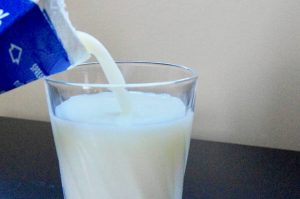
A recent report from the Agri-Food Analytics Lab says that without major changes, Canada could lose half of its dairy farms in the next decade.
“Under the current regime, the number of dairy farms in Canada could go from over 10,000 to less than 5,500 by 2030,” said the report from the think-tank, headquartered at the University of Dalhousie and led by well-known food industry analyst Sylvain Charlebois.
The report points to declining milk consumption, increased imports because of trade deals, and a lack of innovation in creating dairy products that could boost demand.
But the report’s call to offer voluntary buyouts of quota, creating an “innovation fund” and gradually reducing tariffs while fostering exports is ivory tower thinking, said the vice-chair of Alberta Milk.
“It’s pretty interesting that a guy is studying the dairy industry and thinks he has it figured out in a few years,” said Stuart Boeve, who farms in the Taber area.
“This is an incredibly complex industry that has a lot of history to it. To come up with this from the outside looking in, it’s easy enough to say, but I’m not convinced a lot of this is going to work.”
But the report by Charlebois and University of Guelph economist Simon Somogyi contains some sobering facts, including an ongoing and steady decline in both per capita milk consumption and the number of dairy farms.
However, the latter is not a sign of a failed system, said Boeve.
“All over the world, farm numbers are shrinking, so to predict half of them would be gone, I’m not sure where that comes from,” he said. “All over the world, you see consolidation, so I’m not sure it’s supply management that makes that any different.”
That’s not to say there aren’t issues facing the industry, he added.
Processing capacity continues to be a problem, and that isn’t likely to change as a result of trade deals with Europe, Pacific nations, and the U.S. and Mexico (CUSMA). The Dairy Farmers of Canada estimates those three deals will see more than eight per cent of the Canadian market opened to tariff-free competition and force dairy producers here to cut production by a corresponding amount.
“That’s probably the biggest problem we have in processing right now — the uncertainty of the trade agreements,” said Boeve. “Two or three years ago before CUSMA started getting negotiated, Alberta was very close to getting a new processing plant. It was within months of an agreement being signed, and we had done a lot of work on it. Once they started talking about dairy across the U.S. border, that came off the table.
“Processors don’t want to invest because they’re unsure what the future holds.”
Consumer concerns
Unlike many critics of supply management, the Agri-Food Analytics Lab report dismisses the idea that a free market system would greatly lower the price of milk and dairy products.
“The evidence that suggests that milk and dairy products would be more affordable if supply management ends is weak, at best,” says the report, adding the cost of distributing milk across a very large country increases costs here.
The report also draws on consumer surveys conducted by the analytics lab to gauge consumer attitudes toward the dairy sector. Those surveys found most Canadians want food produced within their province or region, and most not only think current dairy prices are fair but are willing to pay more for Canadian milk.
But it also found attitudes towards dairy production’s impact on the environment and its animal welfare practices have shifted considerably.
“When considering the welfare of animals, Canadians made it very clear: Canadians do not feel the dairy industry protects animal welfare in Canada (especially younger generations),” the report states.
Those are issues the dairy sector needs to address, said Boeve.
“There’s a lot of misconceptions about our industry,” he said. “We need to be aware of that and get better at it. It’s really important to improve. If we don’t, we definitely will lose market share. That’s a given.”
But the sector has changed in order to address those issues, he said, pointing to the Dairy Farmers of Canada proAction initiative as an example.
Initially launched in the 1990s as the Canadian Quality Milk Program (and then relaunched in 2016 under its new name), the proAction program was designed to show consumers that Canadian dairy farmers are “proactive in providing high-quality, safe, and sustainable food.”
Roughly 99 per cent of dairy farmers have signed on to the program, which offers six different modules on milk quality, food safety, animal care, traceability, biosecurity, and the environment.
The program is starting to gain traction among consumers, Boeve said.
“Consumers are really responding to it as well,” he said. “That’s something really exciting for us. If we can push national standards and keep improving the national standards, I think that’s something really exciting and good for the industry.”
Boeve said he hopes that these changes will also “draw the next generation in,” especially in regard to the public’s view of its animal welfare practices.
“I’ve been in the industry for 35 years, and you just see the attitude change on the animal care side,” he said. “It’s about animal care 24-7-365. We realize that. We need to be leaders in that. I think we have a lot of skills there, but I think we can get a lot better yet.
“And for me, that’s exciting. As a farmer, that’s a nice challenge, something to embrace.”
New industry entrants
The vast majority of dairy farms are in Ontario and Quebec, with 509 producers in this province, according to Alberta Milk’s most recent annual report.
That number has been slowly falling in recent years but drawing new people to the sector is a “real focus” of Alberta Milk, said general manager Freda Molenkamp-Oudman.
“That’s one of the things we do in the New Entrant program,” she said. “It really is a great tool to encourage new entrants in the industry.”
Since its launch in 2011, the program has loaned aspiring dairy farmers two kilograms of quota for every kilogram of quota they purchase (up to 25 kilograms) to help them get a foot in the door of the industry. So far, it’s led to the starting of 18 new dairy farms.
“To me, getting new producers in the industry is a real strength,” she said. “I think we’re on a good path there and we need to continue moving forward.”
There’s also increased collaboration within the industry, said Molenkamp-Oudman. For example, the four dairy commissions in Western Canada co-operated through their milk-pooling program in order to facilitate the building of a new state-of-the-art dairy concentration facility (which will open near Lacombe next year).
“Even in the face of challenges, some of the work that’s happened to build greater collaboration provincially and nationally has been great,” said Molenkamp-Oudman, adding the pandemic has highlighted the need to work together.
“COVID-19 has certainly had impacts on the dairy industry. But like a lot of industries, it’s shown where there are areas where we can work better together, and we’ve done a lot of that over the past year as well.”
It won’t take radical measures — such as buying out quota or taking down the tariff wall — to bring change to the sector, she said.
“Every industry has opportunities to improve and make advancements, and the dairy industry is no different. I would hope that, in 20 years, every industry starts to look different.”
But the report’s finding that consumers “overwhelmingly support Canadian dairy farming” is encouraging and the sector needs to keep “focusing on supplying high-quality milk to processors to develop products that meet consumers’ needs,” said Molenkamp-Oudman.

























